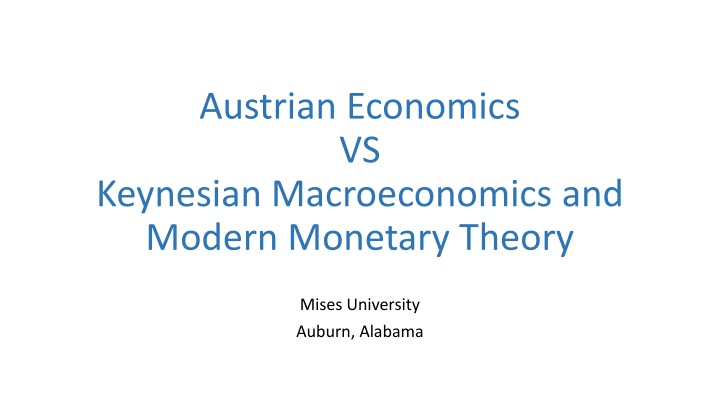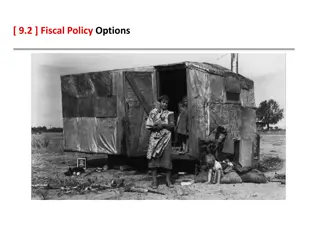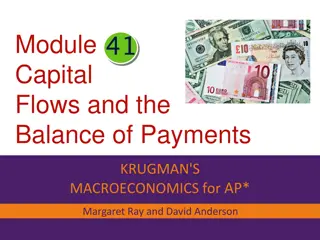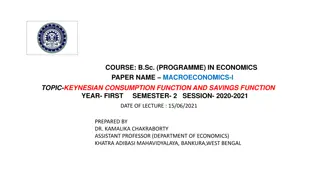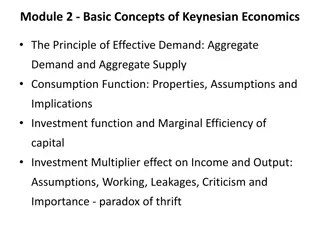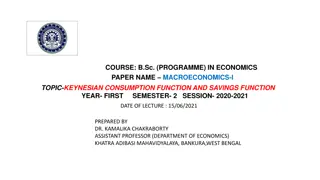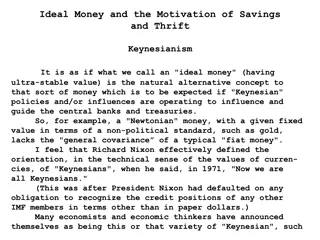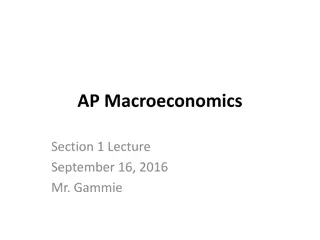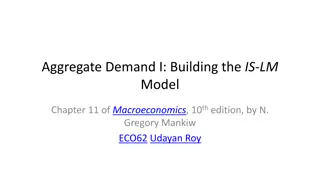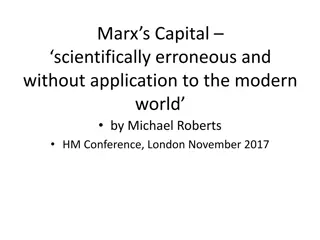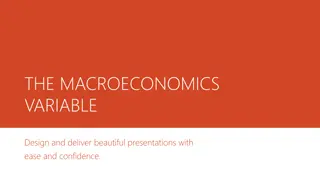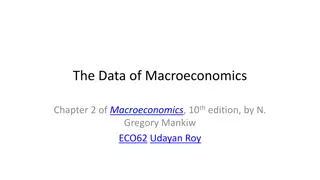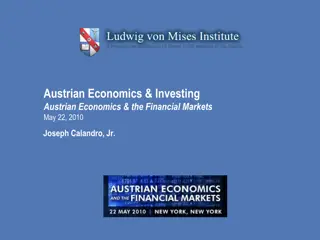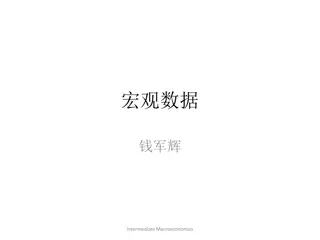Contrasting Austrian Economics vs. Keynesian Macroeconomics
Austrian Economics emphasizes human action, voluntary saving, and analyzing the entire economic order, while Keynesian Macroeconomics views the economy as inherently unstable and focuses on factors like spending, investment, and interest rates to manage recession risks. The modern macroeconomics approach involves abstract modeling to understand complex societal relationships.
Download Presentation

Please find below an Image/Link to download the presentation.
The content on the website is provided AS IS for your information and personal use only. It may not be sold, licensed, or shared on other websites without obtaining consent from the author.If you encounter any issues during the download, it is possible that the publisher has removed the file from their server.
You are allowed to download the files provided on this website for personal or commercial use, subject to the condition that they are used lawfully. All files are the property of their respective owners.
The content on the website is provided AS IS for your information and personal use only. It may not be sold, licensed, or shared on other websites without obtaining consent from the author.
E N D
Presentation Transcript
Austrian Economics VS Keynesian Macroeconomics and Modern Monetary Theory Mises University Auburn, Alabama
Macroeconomics First Use of Term: Jacob Marschak, A Cross Section of Business Cycle Discussion The American Economic Review, Vol. 35, No. 3 (Jun., 1945), pp. 368-381 Across the distinction between statics and dynamics cuts another one: that between aggregative or "macro"- economics, and the "micro"- economics of a single firm or household.
Macroeconomics Key topics: Purchasing power of money Recession Economic Expansion and Development Must grasp how each individual market is integrated into the broad social economy
Macroeconomics Modern Macroeconomics Is Dominated by Modeling Model-Building: Abstract construction of only a few of the many relationships in economy or society. What are some common characteristics?
Austrian Economics Proceeds from human action to derive principles that allow us to ultimately analyze topics relevant for entire economic order. Sound Macroeconomics must incorporate what incorporates entire social economy. Economic progress is result of increases in voluntary saving.
Keynesian Macro Represents National Income (Y) as sum of spending in various sectors of the economy. Y = C + I + G Believe that economy is inherently unstable and easily tends to recession. Due to volatile business investment (I) Resulting from collapse of Marginal Efficiency of Capital (MEC) driven by changes in animal spirits.
Keynesian Macro Important issue is the relative levels of MEC and the interest rate. Interest rate: Obviously measures the premium which has to be offered to induce people to hold their wealth in some form other than hoarded money. Determined by S of and D for money: Liquidity Preference Theory of Money. Rate of payed and received in loanable funds market.
Keynesian Macro If MEC < r, Investment (I) in production decreases Decreased Investment causes decreased aggregate demand I AD = C + I + G Results in decreased output and decreased demand for labor. Wages and prices are sticky downward: results is a general glut of goods and unemployment.
Keynesian Macro Two solutions: State managed interest rates to continually insure appropriate volume of investment. o Limitations on Monetary Policy Effectiveness. Socialize investment. Fiscal Keynesians (Samuelson): Make-up gap left by I with G
Modern Monetary Theory Key premises: Money is creation of state Government cannot become insolvent; can always print money to pay its debts and finance new spending. Unemployment is due to insufficient government spending.
Modern Monetary Theory Arrives at conclusions by manipulating Keynesian income equation: Y = C + I + G Y = C + S + T In equilibrium: C + S + T = Y = C + I + G. S + T = I + G. G T = S I Government Budget Deficit = Net Private Saving.
Modern Monetary Theory Policy Conclusions: Government can and should monetize government deficit spending. If monetary inflation results in high price inflation, government can fix problem by increasing taxes.
Modern Monetary Theory Not Exactly New Not Exactly Monetary Not Exactly a Theory
Consequences Massive inflation Capital consumption What if Treasury issues new bonds, which are resold to Fed in bond market? What if newly created money will go directly into the Treasury?
